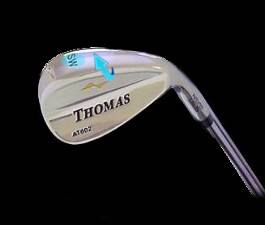
In golf, the term “bounce” refers to the angle or curvature on the sole (bottom) of a golf club's head, particularly irons and wedges. The bounce is designed to prevent the club from digging too deeply into the ground when making contact with the ball. It helps the club glide through the turf or sand, reducing the likelihood of hitting fat or heavy shots.
The bounce is essentially the measurement between the leading edge of the club and the lowest point of the sole. It is typically indicated in degrees. A higher degree of bounce means the leading edge is farther off the ground, which is beneficial when playing from softer turf or bunkers. Conversely, a lower degree of bounce is suitable for firm ground conditions.
The bounce angle selection depends on various factors, including the golfer's swing style, the type of course conditions, and personal preference. Golfers with steep or more aggressive swings may prefer clubs with higher bounce to prevent excessive digging, while those with shallow swings may opt for lower bounce to maintain better control.
It's important to note that the bounce angle is just one aspect to consider when selecting a golf club. Loft, shaft flex, and other factors also play crucial roles in club performance and are taken into account when choosing the right equipment for a golfer's game.
When the trailing edge of a club’s sole is lower than its leading edge, the club features bounce. This means that when placed flat on a level surface, the leading edge will be off the ground. Measured in degrees, bounce is highest on the sand wedge; a higher degree equals a deeper trailing edge, which will displace more sand on bunker shots.
The bounce of a sand wedge influences its playing characteristics. A wedge with a high degree of bounce (14-16°) is best when the sand is deep and/or soft. Wedges with less bounce (8-10°) work well from thin or firm sand. For fairway play, a high-bounce wedge is more effective on soft turf, while a low-bounce club is preferred on firmer ground.
A golfer’s swing should be considered when choosing the amount of bounce. Those with steep swings benefit from a high degree of bounce, while players with sweeping motions require less.





